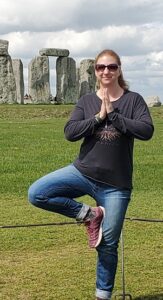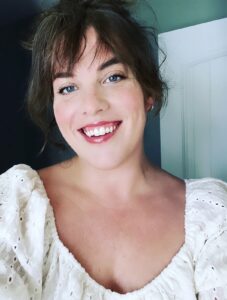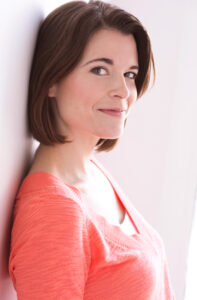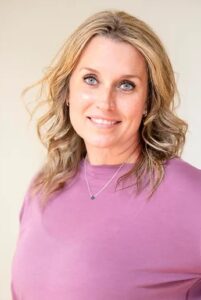Mind, body, spirit — yoga is a holistic experience for many. But did one element or another first draw you to the practice? That is, were you seeking to settle your mind? Have greater physical flexibility? Explore your spiritual nature?
I became interested in yoga in college, but didn’t take a class until after college when I took my first job — the yogic and Hindu philosophy, present moment awareness, and meditation was what actually drew me in the first place — I am very much a seeker and a college philosophy course really sparked my interest — I was already doing physical activity, and the movement practice was more about the body/mind connection — although flexibility is a great secondary benefit!
 How about now: does yoga feed your mind or your body or your spirit more, or are those elements more in balance than when you started?
How about now: does yoga feed your mind or your body or your spirit more, or are those elements more in balance than when you started?
yoga over the past 20+ years for me now feeds every aspect of my life — as I now have more of a desk job, the physical aspect of stretching is actually more important to keeping me pain free — I also use breathwork and yoga nidra for relaxation — and teaching yoga and owning a studio also feeds a creative need in me — the process of putting together a yoga class and maybe some music to complement it is really enjoyable
How long did you practice yoga before you started teaching it?
I practiced yoga for about 2 years before teaching — I knew I wanted a deeper knowledge of yoga, so the teacher training was more for me, at first — but our little community needed actual yoga teachers, so I began teaching as a way to bring it to others in 2003
When you’re teaching regularly, can you lead classes too often? How many times a week, and a day, might be too much?
since I also have another job, I only teach about 4-5 classes a week — there was a point where I taught 3 classes in one day — that was a lot, both mentally and physically, and wasn’t really sustainable with everything else going on — two classes in a day is plenty — I try to balance my yoga so that it doesn’t feel like work! — it’s my passion and I want to protect that
Do you have a preferred yoga style?
my go to practice is Vinyasa flow or Yin Yoga — but I enjoy getting to practice Kundalini and Iyengar for some of the benefits more specific to each
When you were starting out, what came easiest and what was more challenging?
settling my “monkey” mind was often one of the hardest things — but I loved when I could really tune in during a practice or savasana and catch those times of “thoughtlessness”
From your experience as a teacher, can you generalize about what comes easiest for beginners and what is more challenging?
I don’t know if there is an easy part for beginners — but not because the practice is hard, but because of the mindset of forcing and not allowing — I find so many people intimidated to even start because they don’t want to “do it wrong” or “look wrong” — the beginner mindset is that it’s not okay to be a beginner — it has to be perfect right away — that’s the hard part… allowing yourself to be a beginner and open yourself up to learning and not looking or being perfect, because there is no perfect — after 20 years there are things that I can’t physically do, whether it’s because my body isn’t physically able to bend in a certain way or because I haven’t taken the time to really cultivate practicing certain things — and either way, that’s okay
What are the more difficult poses for beginners to execute?
unless it is set up well, I don’t think most people need to put the compression on the cervical spine that shoulderstand creates — our modern forward slumping shoulders already exacerbates that — until it is learned safely (at the wall and with props), I don’t think the benefits outweigh the risks — another asana that I think beginners should learn with a teacher so they can do them safely is Ardha chandrasana (standing half moon) — understanding rooting/grounding and even using a block or a wall to find alignment if the hip isn’t open enough can make a lot of difference to the balance and enjoyment of that pose
What have been the greatest benefits of yoga for you?
learning to observe my thoughts in the moment before I act on something — being present for wonderful things that I might miss otherwise — breathwork, meditation and flexibility have helped me with both of my pregnancies and childbirth — and I get to meet some pretty amazing people as both teachers and students from being a yogini — shoutouts to a few of my amazing teachers: Anna Pittman, Paul Grilley, Eric Schiffman, and Katie Silcox
Apart from yoga, do you practice other techniques of mindfulness or meditation?
I practice yoga nidra, especially for sleep — walking and being in nature — my seated meditation is on and off — I also find painting to be a mindfulness practice, especially outdoors
Do you regularly do other forms of exercise?
mostly walking or hiking
Outside of a yoga session, do you ever just strike a pose and stretch? If so, which poses and where?
twists in bed first thing in the morning — squatting is great for some back traction — and legs up the wall on an acupressure mat when I get a migraine
You have a choice: lead a yoga class (1) outdoors on a beautiful day, overlooking the ocean, or (2) in a well-designed, very comfortable minimalist indoor space. Which do you pick?
I’m a forester by profession and an outdoorsy person in general — outdoors anytime, anywhere — I’m spoiled to live in a beautiful place in the mountains where outdoor yoga is just magical
—interview © Marshal Zeringue
 How about now: does yoga feed your mind or your body or your spirit more, or are those elements more in balance than when you started?
How about now: does yoga feed your mind or your body or your spirit more, or are those elements more in balance than when you started?
 How about now: does yoga feed your mind or your body or your spirit more, or are those elements more in balance than when you started?
How about now: does yoga feed your mind or your body or your spirit more, or are those elements more in balance than when you started? How about now: does yoga feed your mind or your body or your spirit more, or are those elements more in balance than when you started?
How about now: does yoga feed your mind or your body or your spirit more, or are those elements more in balance than when you started? How about now: does yoga feed your mind or your body or your spirit more, or are those elements more in balance than when you started?
How about now: does yoga feed your mind or your body or your spirit more, or are those elements more in balance than when you started? How about now: does yoga feed your mind or your body or your spirit more, or are those elements more in balance than when you started?
How about now: does yoga feed your mind or your body or your spirit more, or are those elements more in balance than when you started? How about now: does yoga feed your mind or your body or your spirit more, or are those elements more in balance than when you started?
How about now: does yoga feed your mind or your body or your spirit more, or are those elements more in balance than when you started? How about as your practice evolved: did yoga feed your mind or your body or your spirit more; were those elements more in balance than when you started?
How about as your practice evolved: did yoga feed your mind or your body or your spirit more; were those elements more in balance than when you started? How about now: does yoga feed your mind or your body or your spirit more, or are those elements more in balance than when you started?
How about now: does yoga feed your mind or your body or your spirit more, or are those elements more in balance than when you started? How about now: does yoga feed your mind or your body or your spirit more, or are those elements more in balance than when you started?
How about now: does yoga feed your mind or your body or your spirit more, or are those elements more in balance than when you started? How about now: does yoga feed your mind or your body or your spirit more, or are those elements more in balance than when you started?
How about now: does yoga feed your mind or your body or your spirit more, or are those elements more in balance than when you started?